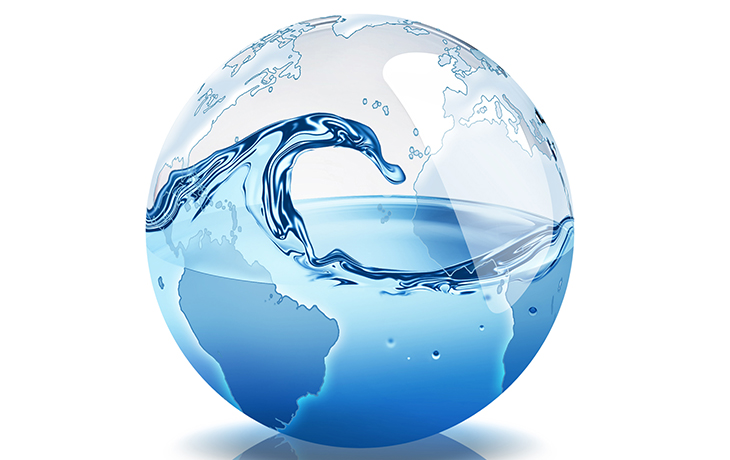More news
- Focus on the global coatings market: Global coatings market outlook
- Innovative coatings mitigate effects of deepening climate change
- View from the UK: Navigating chemical policy and sustainability
- Focus on adhesives: Unveiling unbreakable bonds – Testing redefines physical strengt...
- Focus on adhesives: Henkel and Covestro collaborate for sustainability of engineered wood ...

Experts from AkzoNobel discuss how the company is at the forefront of water-based technology across multiple sectors of the coatings industry
“Solvents have a relatively large impact on carbon footprint,” says Wim Pranger, Manager of AkzoNobel’s Water-based Expertise Center. “They’re derived from fossil-based oil and when they’re emitted into the atmosphere, they contribute to ozone formation, a greenhouse gas. So reducing solvents is an important part of reducing our carbon footprint.”
Water-based technology is part of the solution
“Water-based technologies have some great benefits: fast drying, reduced recoat time, less yellowing and milder odour,” continues Wim. “They also come with some challenges. Formulators have a choice of solvents that help them tune the properties of a solvent-based coating. With a water-based formulation, they need to work with other components, such as resins and additives to meet customer requirements.
“Our R&D teams work in many ways to achieve the corrosion performance, application performance and barrier properties required from water-based technologies. As a company, we can develop resins ourselves, but also make use of our suppliers’ huge potential.”
READ MORE:
Constructing a more sustainable future with antimicrobial innovations
Supply chain due diligence – Environmental, social and governance
View from the US: Don’t look now, but PFAS is EVERYWHERE!
On the frontier of water-based applications
“The consumer electronics industry is divided into three segments: IT, home appliances and wireless,” adds Maximilien Schreder, Regional Commercial Director Global Consumer Electronics and North Asia VR/Auto at AkzoNobel. “We’re working on solutions for laptops, washing machines, toothbrushes and even hair clippers.
“Beyond durability and multi-substrate aspects of products for these segments, we’re involved with design features that help our customers get more value for their brand and products. This can be done through haptics (or soft touch) technology, colour, design trends and more sustainable solutions.
“We’re still on the frontier of water-based solutions in some sectors,” Maximilien continues. “That’s why it’s so interesting to have automotive and consumer electronics under the same portfolio. Water-based technology was deployed 20 years ago in automotive. We’re able to take the learnings from well-established performance there and use them to convince a new market.”
Adds Jeroen Brink, AkzoNobel’s Regulatory, Complexity and Sustainability Manager for BU Paints EMEA: “This is a great example of how uniquely placed AkzoNobel is in the transition from solvents, due to our presence internationally across markets. We can really learn and transfer progress across the world like nobody else can.”
Maximilien says that supporting customers using this global transfer capability is key: “We don’t just develop our water-based solutions in the lab, but work together to test the performance in real life at their sites and with their suppliers.”
A fact-based approach to changing behaviour
The company recognised the opportunities in water-based technology more than 20 years ago, when many governments began to focus on water-based products. Around 2010, the European Union’s strict limits on solvents were a game-changer for the whole industry. Then in 2016, AkzoNobel launched the Waterway programme for interior wall paints, which now includes woodcare and trim paints, as well as solvent-free products.
“Our main customer groups are embracing carbon footprint reduction targets, many backed up by the Science Based Targets initiative, just like ours are,” notes Jeroen. “For large-scale outlets, we use our Sustainable Product Portfolio Assessment to compare our products with the lowest carbon footprint to what the customer already buys. For professional painters and specifiers, it’s more about individual products backed by a lifecycle analysis and third party validation, which we have at our fingertips.”
The future
“It’s obvious that all our customers and stakeholders are all aligned on one truth,” continues Jeroen. “Even if you ask the most traditionalist decorator in the UK: ‘What’s the future?’ They’ll say it’s water-based.”
Maximilien sees this trend as well: “Since the COVID-19 pandemic, many customers are having to reinvent themselves – differentiate with product features, accelerate their sustainability roadmap, perhaps reduce cost. But even in a downturn, all our top customers will tell you that within three to five years, the future is water-based.”
Maggie Shao, AkzoNobel’s Regional Development and Solution Manager Consumer Electronics and Auto in Asia, adds that the company has an important role to play in shaping upcoming regulations: “Regulators in China asked us as an industry leader to provide recommendations during an upgrade of product VOC levels. That means thinking about what kind of industry and country we’re working towards. Whatever new technologies we come up with, we’ll work with the lowest solvent levels possible.”



